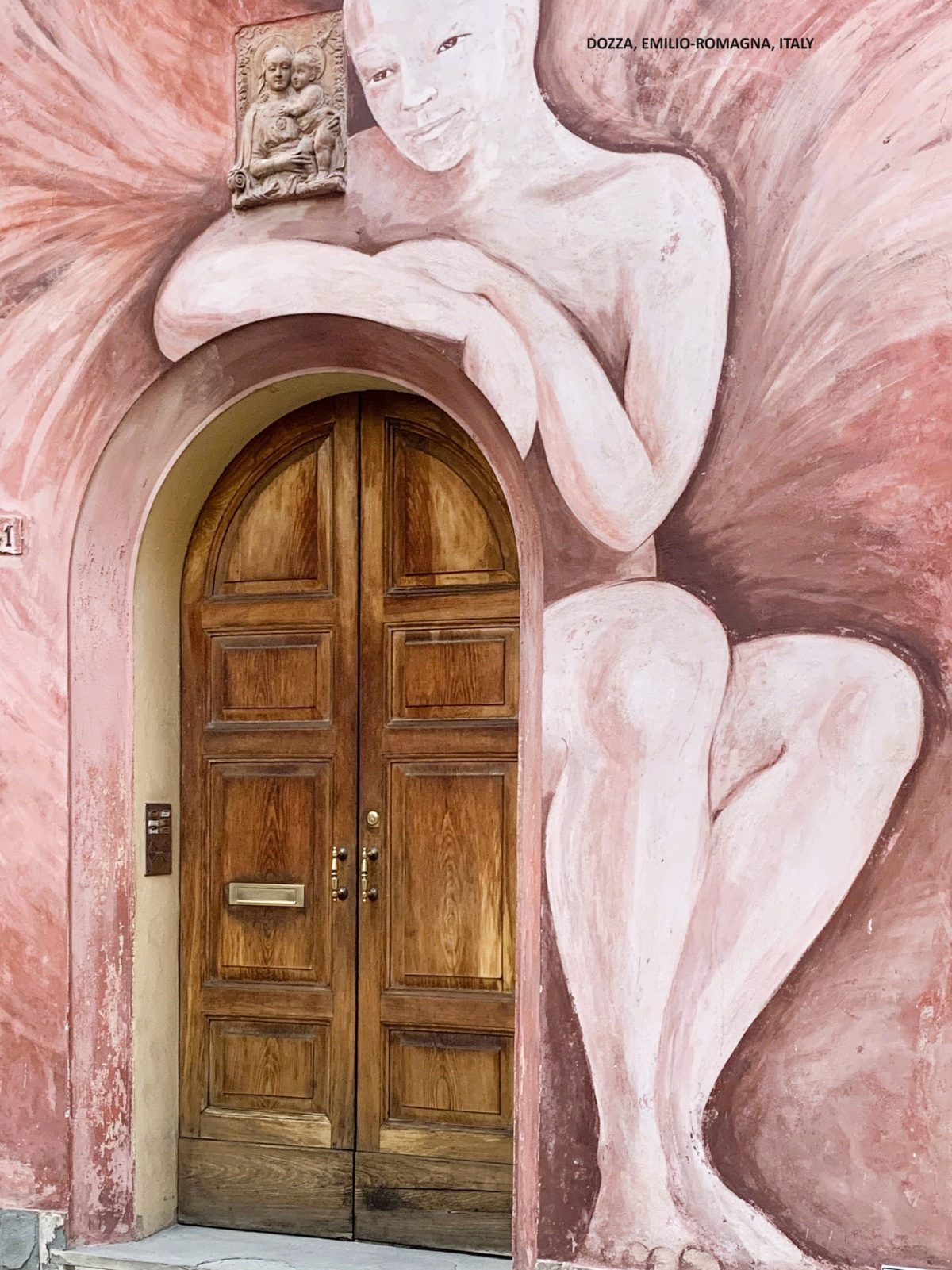Everyone I know who has been to the Region of Aragon (that’s not many I admit but, even so) have gone there to enjoy the mountains and the rivers in the north. So far as I am aware not one has visited Huesca City. It was the same with Vanya and I until this particular tour and we’re both so pleased that we took the time to visit the place. It was a short visit but it was most enjoyable and we will return.
Huesca is the most northerly of Aragon’s three Provinces (the other two being Zaragoza and Teruel) and Huesca City is Huesca’s capital. With a population of approximately 52,000 it is a small city yet, it has so much history. It started as a Celtiberian village long before the Romans colonised the area and then; after the fall of the Roman Empire, was taken and ruled first by the Visigoths and then by the Moors until the time of the reconquest by the Aragonese kings. What remains of those latter days is to be found in the small yet captivating medieval quarter of the city but there are other equally appealing areas of the city even if they do provide for a considerably more modern looking metropolis than is normally to be found in the north of Spain.
The medieval quarter comprises mainly religious buildings (the Cathedral and Episcopal Palace, the Abbey/Monastery and Cloisters of San Pedro el Viejo and the Basilica de San Lorenzo) but there are plenty of other interesting places to see outside of the old town (my favourites are the late 19th/early 20th century monuments and art-deco buildings) but, if they warrant a visit, the area’s gastronomy justifies a full expedition (more about that later).
We were parked up in Camping San Jorge on the western edge of the city and the 15 minute walk to the medieval quarter took us through Parque Miguel Servet (a 100 year old green zone with ponds, a wide variety of trees, bandstand, origami statue and, not forgetting, Snow White’s House) and then on across the Plaza de Navarra (with it’s 1885 Fountain of the Muses and impressive Circle Oscense or Casino Building) and into the old town via the Calle de Galicia.
The biggest surprise in the park is what is known as Snow White’s House. It is actually a reproduction of the Seven Dwarves’ Cottage in the Walt Disney movie, Snow White and the Seven Dwarfs (sic). I read that it contains a library but we didn’t look.
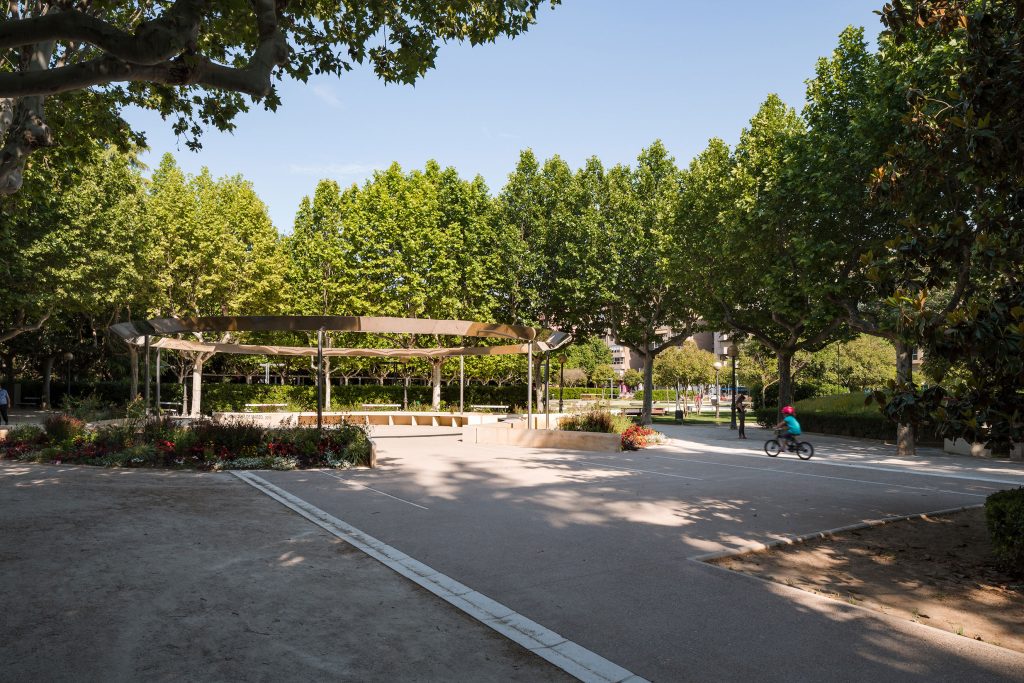
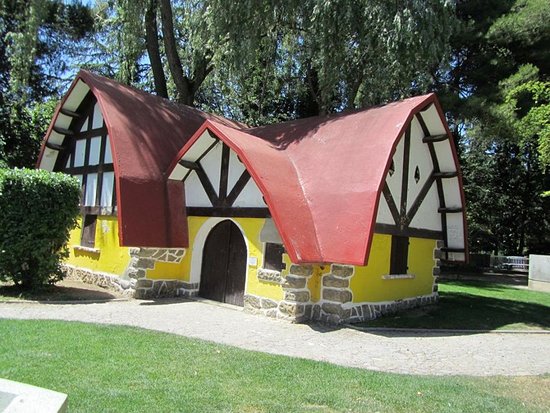
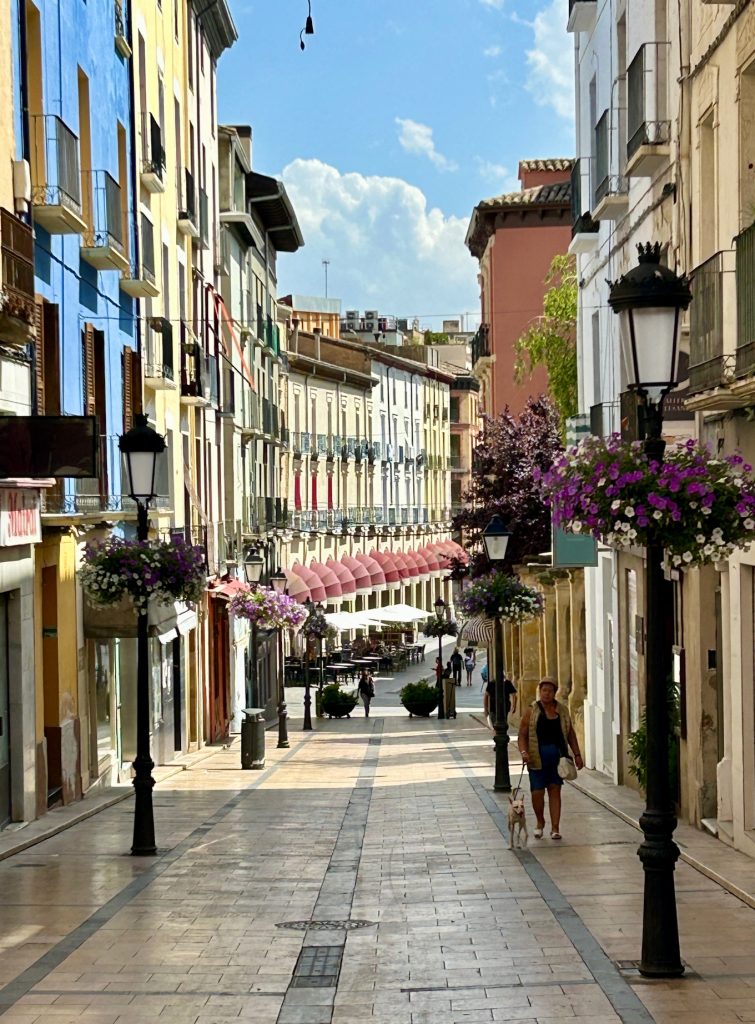
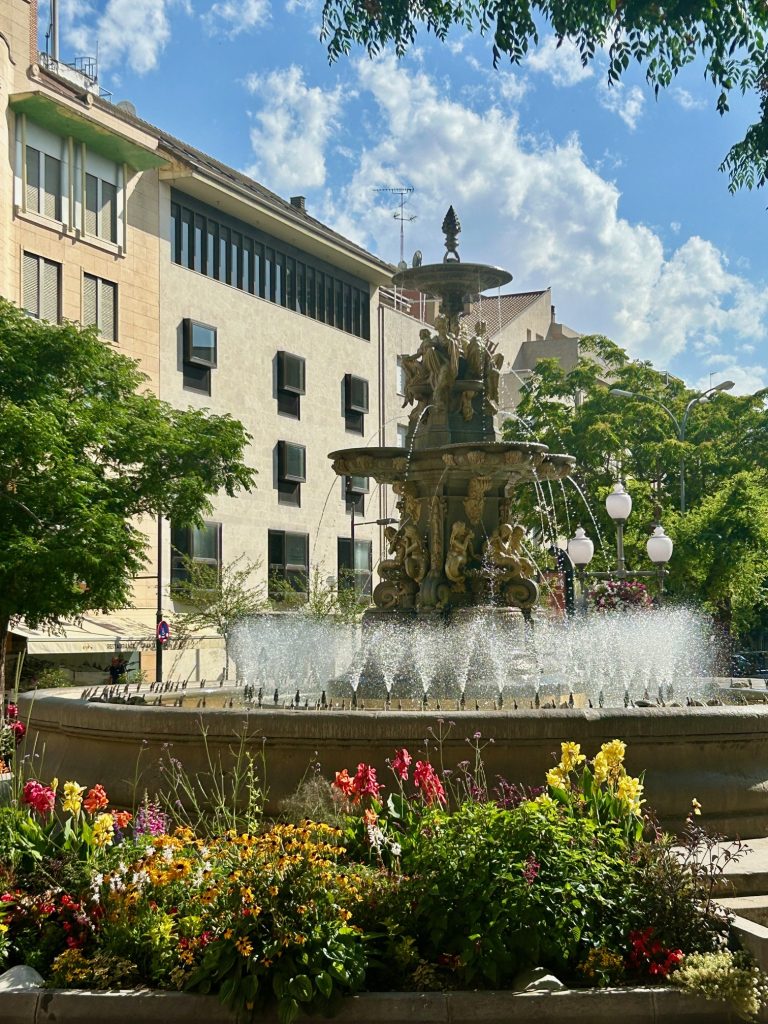
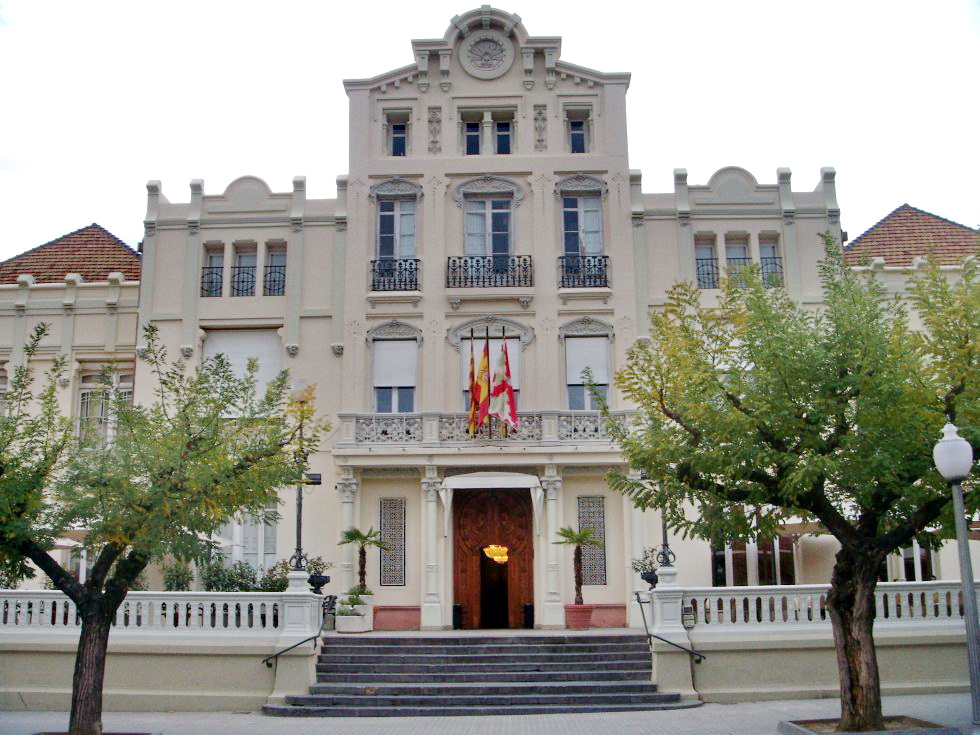
Right on the edge of the Medieval Quarter is Plaza Luis López Allúe. Once known as the Market Square and now regarded as the Plaza Mayor, this square is home to the city’s tourist office. The tourist office was open but otherwise, the Plaza was empty but that’s to be expected in Spain during the afternoon. It would be different when I returned in the evening, when it is cooler, with Vanya and our dogs.
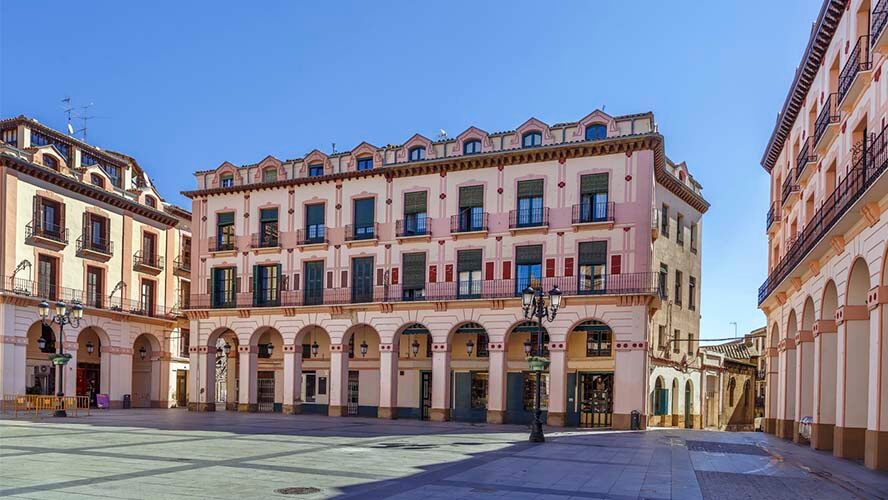
The tourist office recommended my visiting the Medieval Quarter to view some of it’s many impressive ecclesiastical buildings. I started with the Cathedral and the adjoining Episcopal Palace (which has been used as a museum of sacred art and artifacts since 1945) and then moved on to the Monastery and Cloisters of San Pedro el Viejo (the ticket I bought allowed access to both) before finishing the afternoon at the Basilica of San Lorenzo while on my way back to collect Vanya and the dogs from our Van.
Ths 13th century Holy Cathedral of the Transfiguration of the Lord, also known as the Cathedral of Santa Maria, was built in the Gothic style on the site of what was first a Roman temple, then a Visigoth church and finally a Moorish mosque. In fact, the mosque was used as a catholic church for almost 200 years after the Moors were evicted from Aragon and surrounding areas.
The cathedral was finished in 1515 and has since been carefully restored to something approaching it’s original glory except that a particularly imposing spire which crowned the bell tower was accidently destroyed during the Spanish Civil War and has not been replaced. The tower is now left with a flat roof. I was in the cathedral for a fair time. The museum and contents are captivating, as are most of the cathedral’s 14 chapels but, it is the open bell tower which I found most interesting. The views over Huesca City and towards the Pyrenees are fascinating.
Directly opposite the Episcopal Palace on the Plaza de Catedral is another impressive building, an old 16th century renaissance palace with two towers. This building is currently shared by Huesca Ayuntamiento (the Huesca City Council) and the Colegio de Santiago which once belonged to the old University of Huesca. The building is open to tourists every weekday morning but it was closed by the time I had finished in the cathedral and I therefore made my way to the what must be Huesca’s oldest building, the Monastery San Pedro el Viejo.
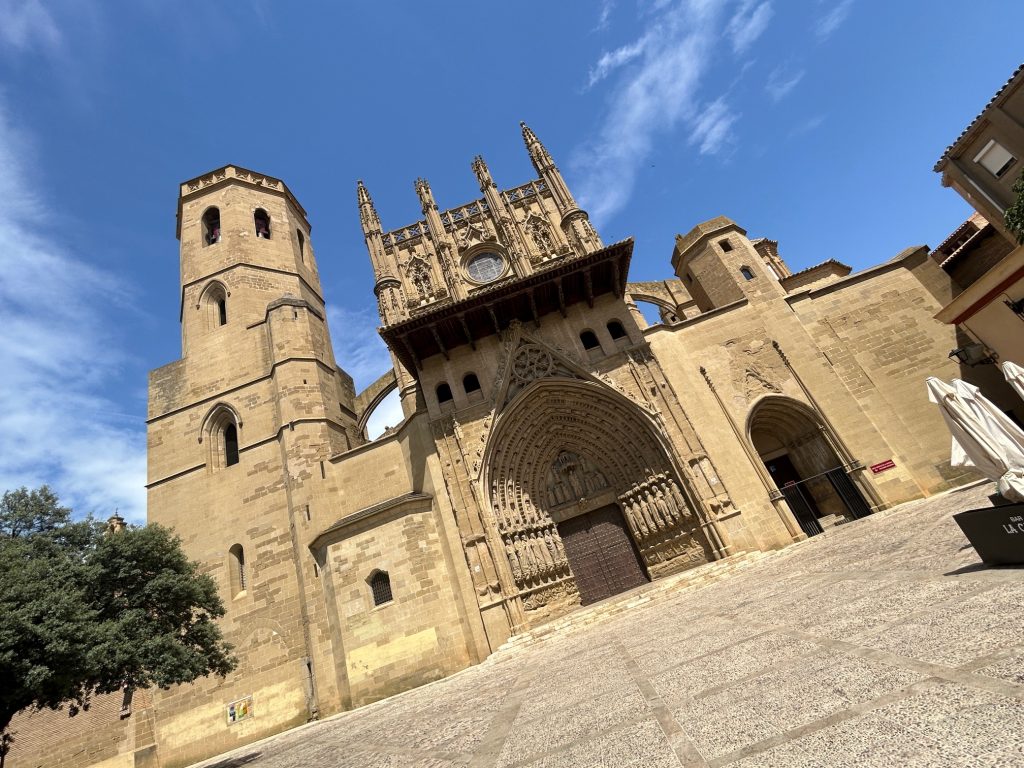
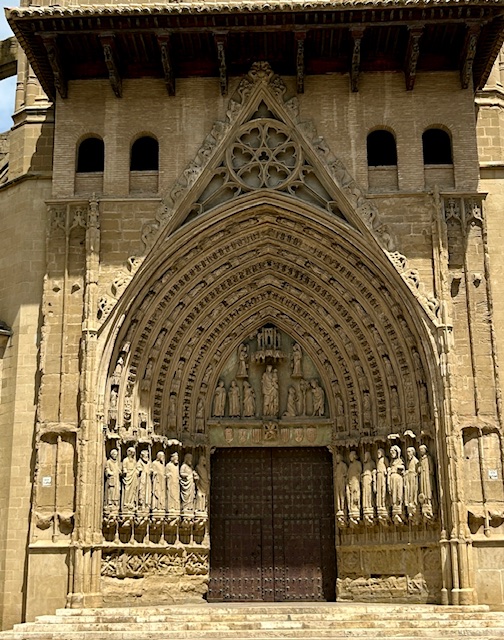
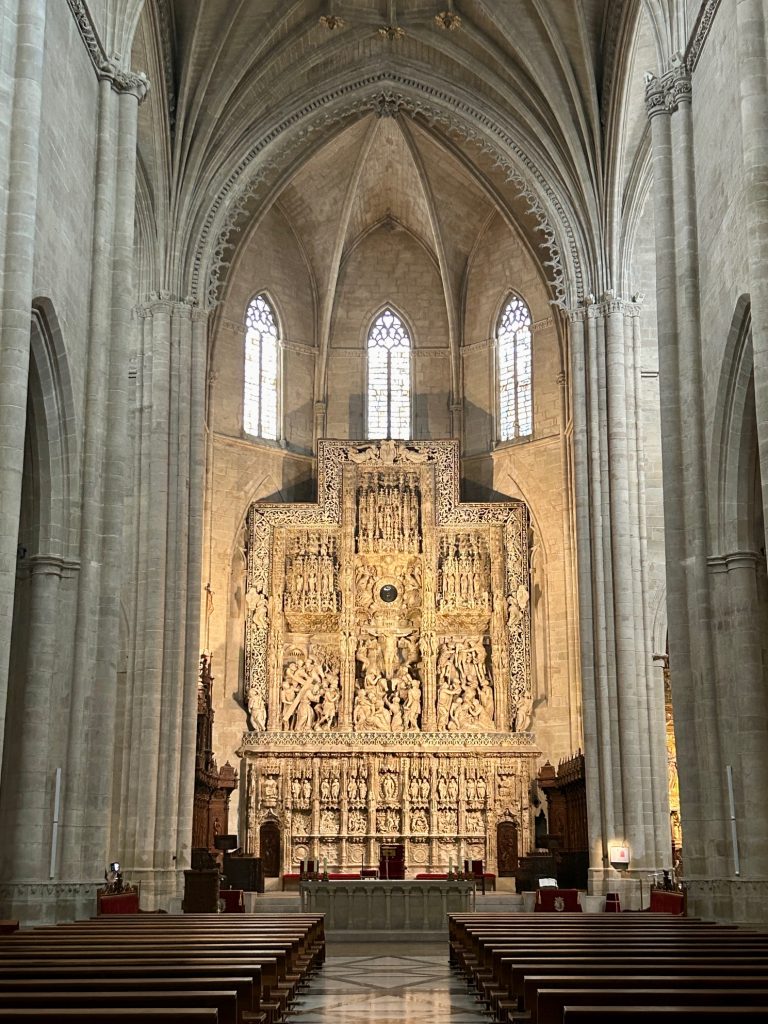
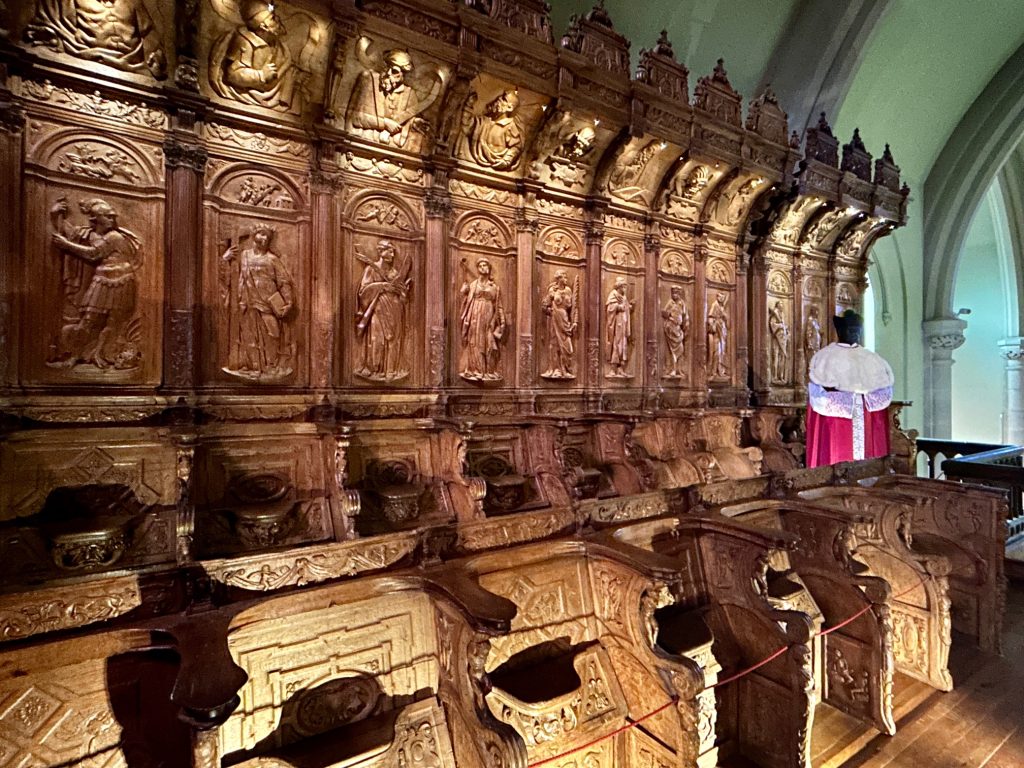
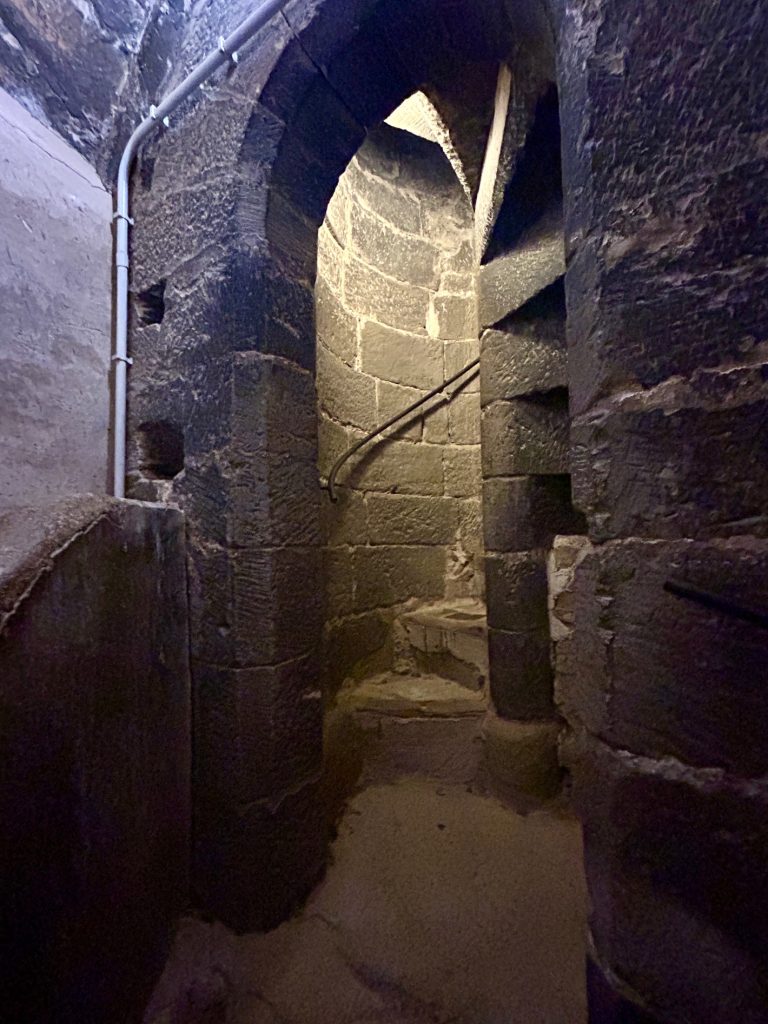
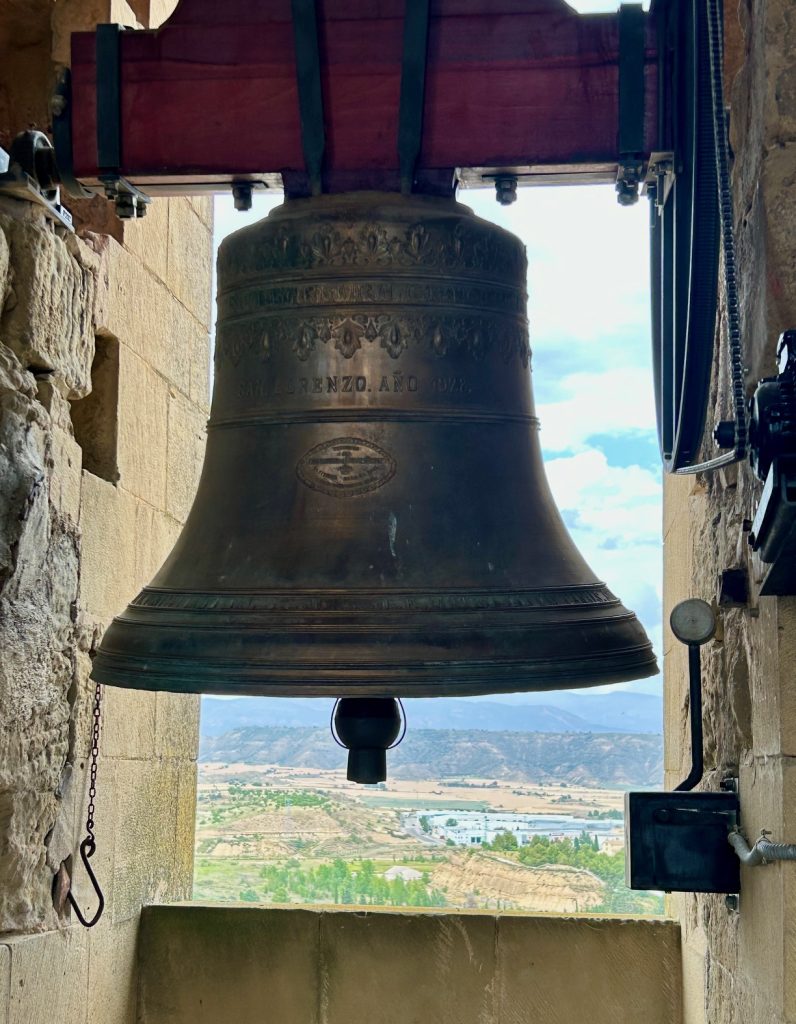

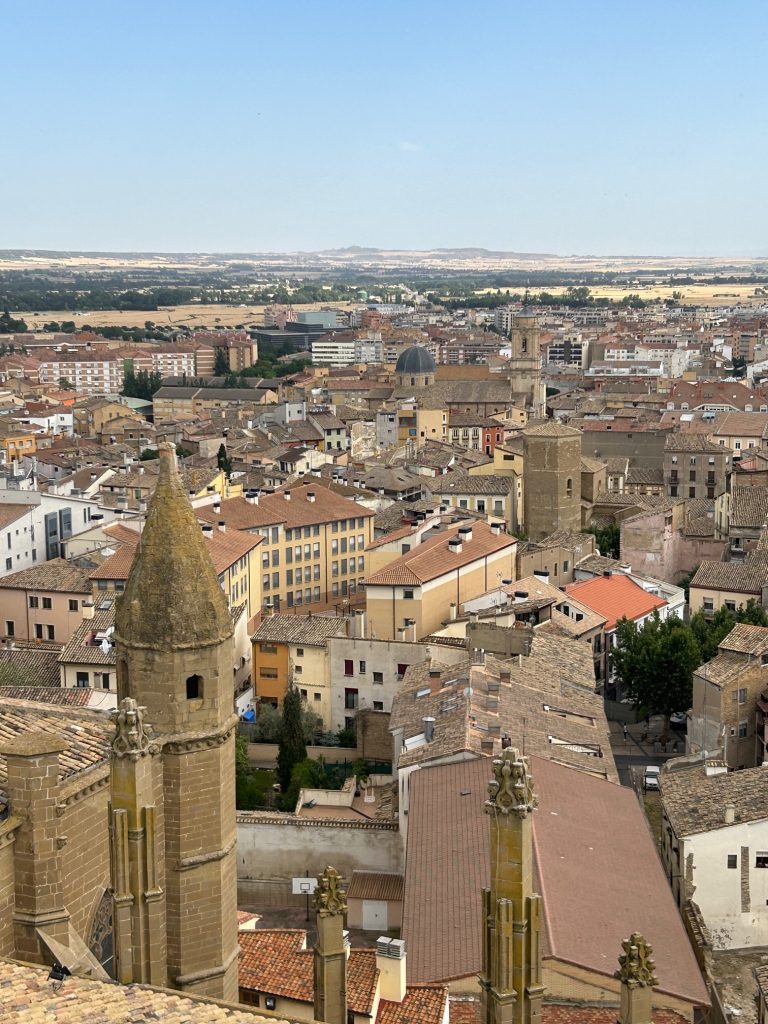
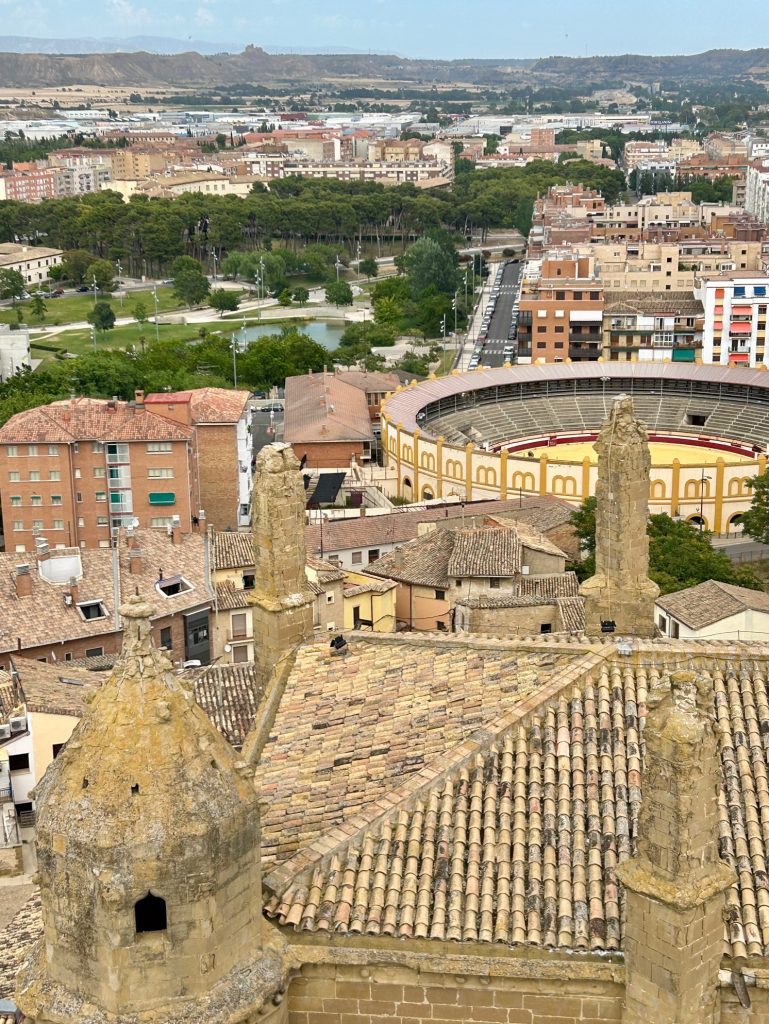
Just yards from the tourist office and easily identified by it’s hexagonal tower, the Abbey of San Pedro el Viejo is one of the oldest ecclesiastical buildings in Spain. It is believed to have existed in the time of the Visigoths although much of the present building and certainly all of the cloisters formed part of a 12th century Benedictine Monastery. The cloisters are as pretty as they come and the monastery’s former chapter room is now a chapel containing the tombs of King Alfonso ‘the Battler’ and his younger brother (and successor) King Ramiro II ‘the Monk’.
Alfonso, King of Aragon & Navarra between 1104 and 1134, was obsessed with war. He fought alongside his elder brother, Peter I, at the Battle of Alcoraz (when Aragon was retaken from the Moors) and accompanied El Cid, during his expeditions in Valencia but; it was later, after winning 29 battles against both Christian and Moorish armies that he earned his nickname ‘The Battler’. Alfonso died childless after suffering wounds in yet another battle and his younger brother, Ramiro,was pressed by Aragonese nobility to take the crown. King Ramiro II earned his soubriquet ‘The Monk’ without quite the same fuss (although his time as king was perhaps no less tumultuous). When pressed to become king, he was already a monk. Indeed, he was the abbot of a Benedictine monastery but; he did as was expected of him; he married; he produced an heir (a daughter, Petronilla); he married his daughter off to King Ramon Berenguer IV (who would in due course unite the kingdoms of Aragon and Barcelona or produce an heir who could do the same) and; he returned to a monastery to live out his days. Interesting times.
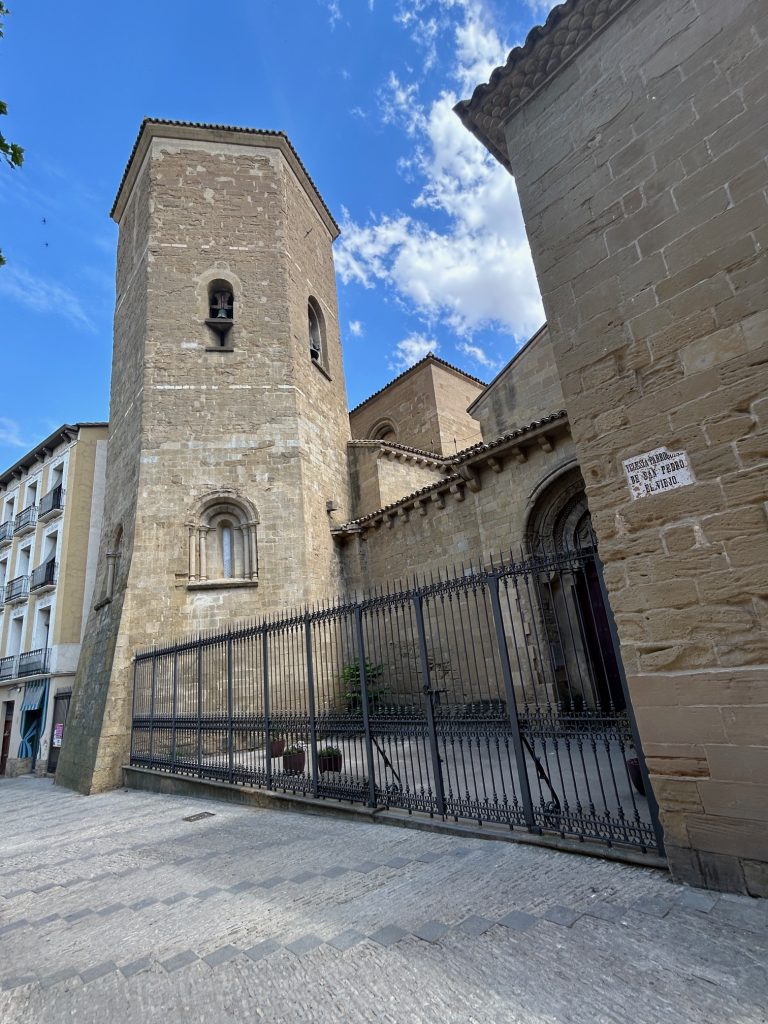
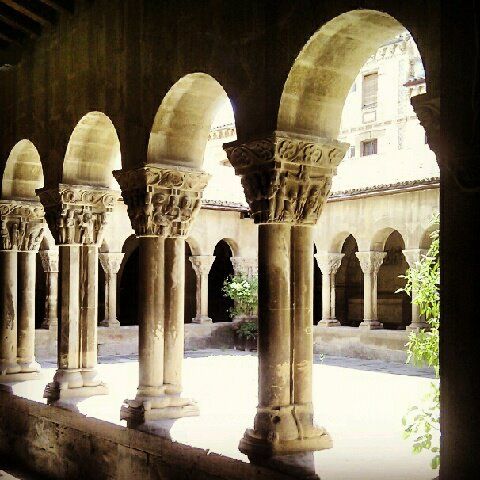
It was almost time for me to collect Vanya and the dogs. There was just enough time to visit the Basilica of San Lorenzo on my way back to the campsite. This route also gave me the opportunity to find an ATM and somewhere to eat in the evening.
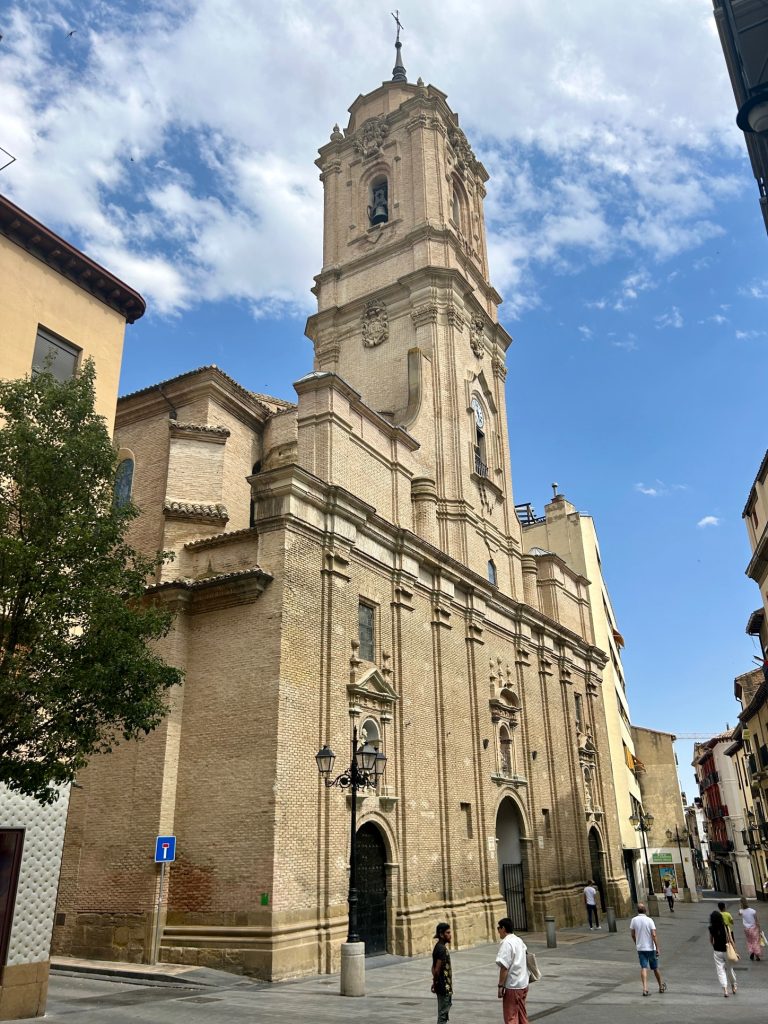
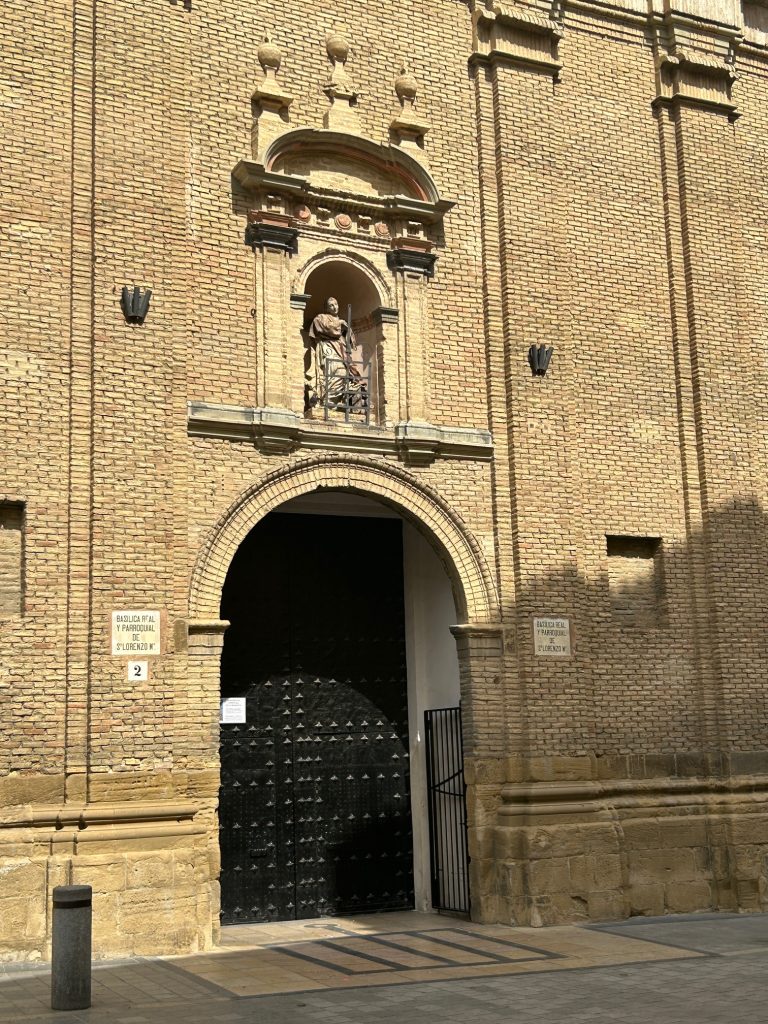
The 17th century Basilica of San Lorenzo was closed by the time I arrived. I can’t therefore tell you much about the place other than that San Lorenzo is known in the UK as Saint Lawrence/Laurence and that he was born in Huesca City and is the Region’s patron Saint. That’s it except that he died a nasty death some time in the 3rd centuy during a purge by the Roman Emperor Valerian.
Some street art caught my eye while I was wandering Huesca City. I immediately recognised the Buster Keaton piece but I had never heard of Ramon Acin. I learned subsequently thathr was an artist, teacher, writer and anarchist who, together with his wife, was amongst the first Republicans to be executed by the Nationalists as the Spanish Civil War began.
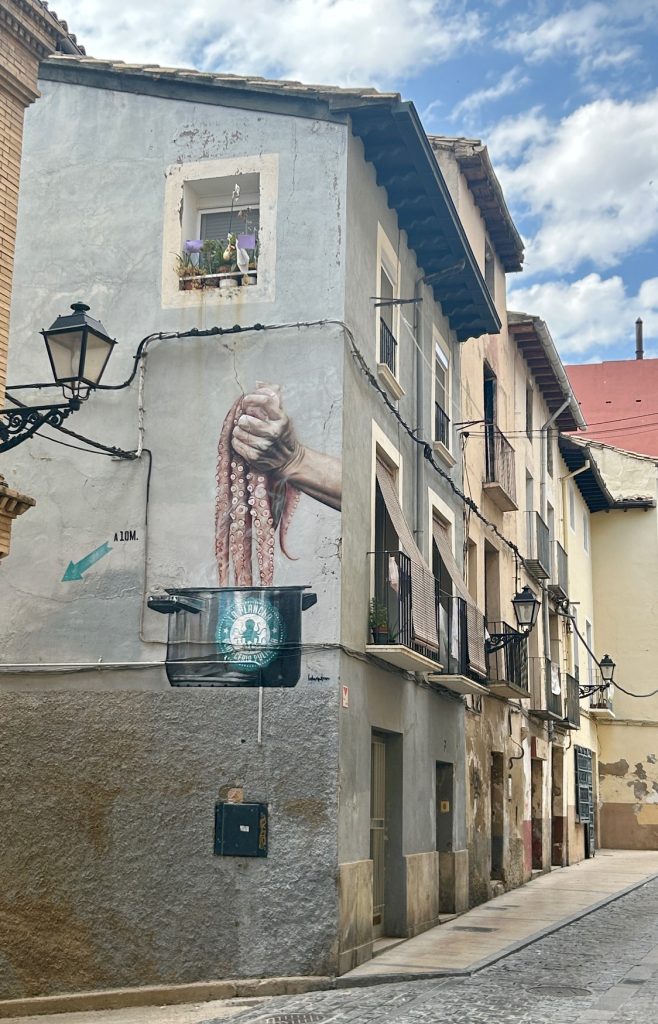
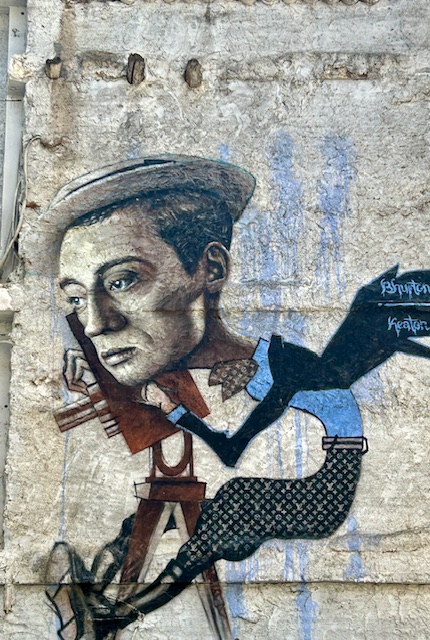

Huesca is famous for it’s gastronomy and that evening, after showing Vanya some of the principal sights in the town, we started to look for somewhere suitable to eat and drink.
Typical dishes of the province include Huescan Garlic Soup, Las Migas a la Pastora de Aragon (breadcrumbs with meat & sausage), Chicken Chilindrón (a chicken stew with peppers & tomatoes), Cordero a la Pastora (a lamb casserole) and Ternasco Asado (roasted Aragon lamb) but these are all hearty dishes better suited to winter or for enjoying up in the mountains where it is generally cooler. Fortunately, Huesca City is also famous for it’s tapas and raciones. Indeed, Huesca is home to “Tatau, a modern tapas bar in the centre of the city which currently holds a Michelin Star. We were unable to secure a table at Tatau and settled at a table outside a lively tapas bar just off of the Calle de San Orencio in the San Lorenzo neighbourhood.
The place looked to be completely full as we arrived and with Nala in her “walking wheels” we weren’t sure we would get a table but the staff and various customers all cheerfully collaborated to clear a space for us at the front of the restaurant. The welcome we received was wonderful and the food surpassed all expectations with my favourite dish being a sensational Pulpo a Feira.
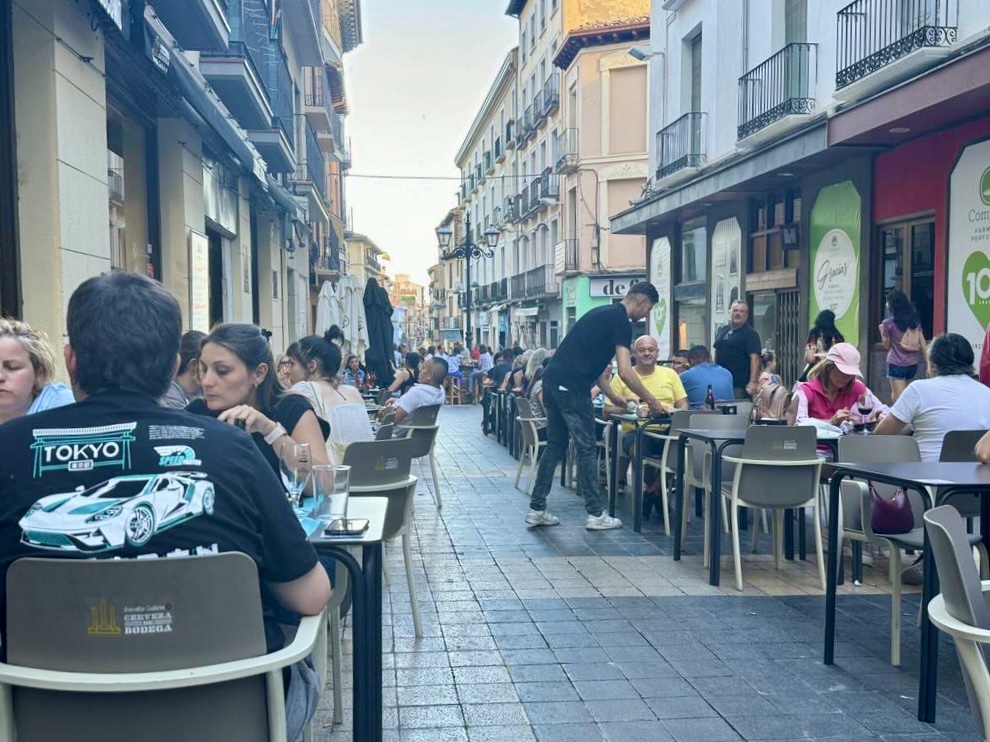
We ordered far too much food and each tapas was far bigger than expected (and they weren’t silly prices either) but we stuffed ourselves silly and did the food proud. I reproduce below the three dishes we most enjoyed but there were many more:-
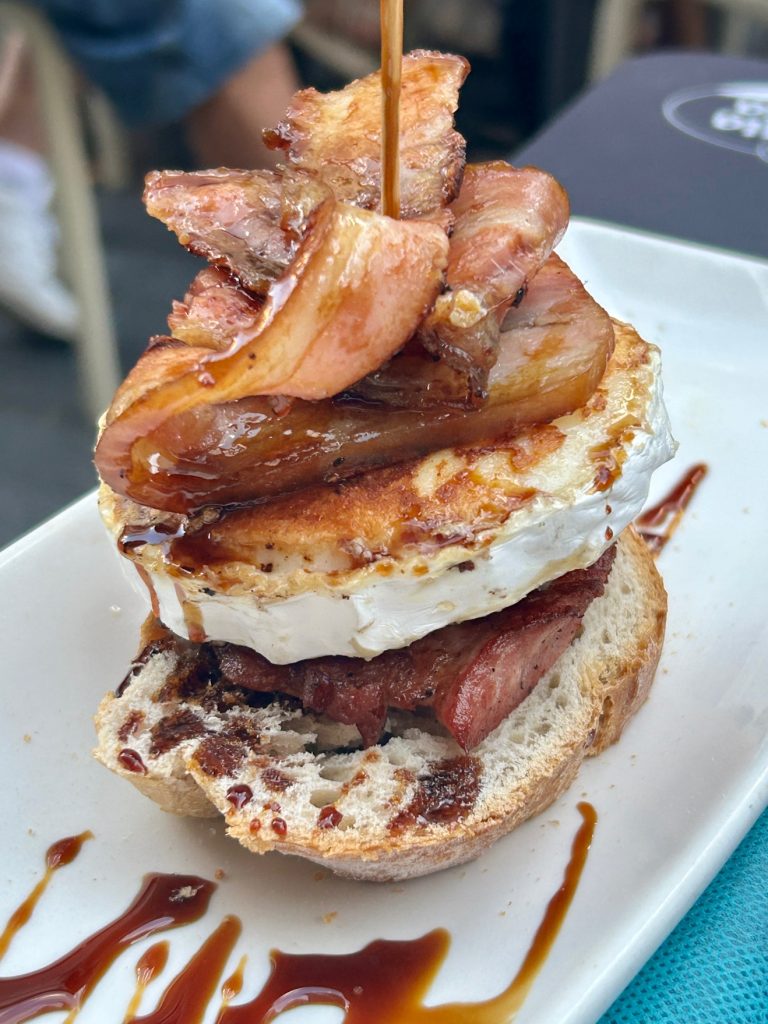

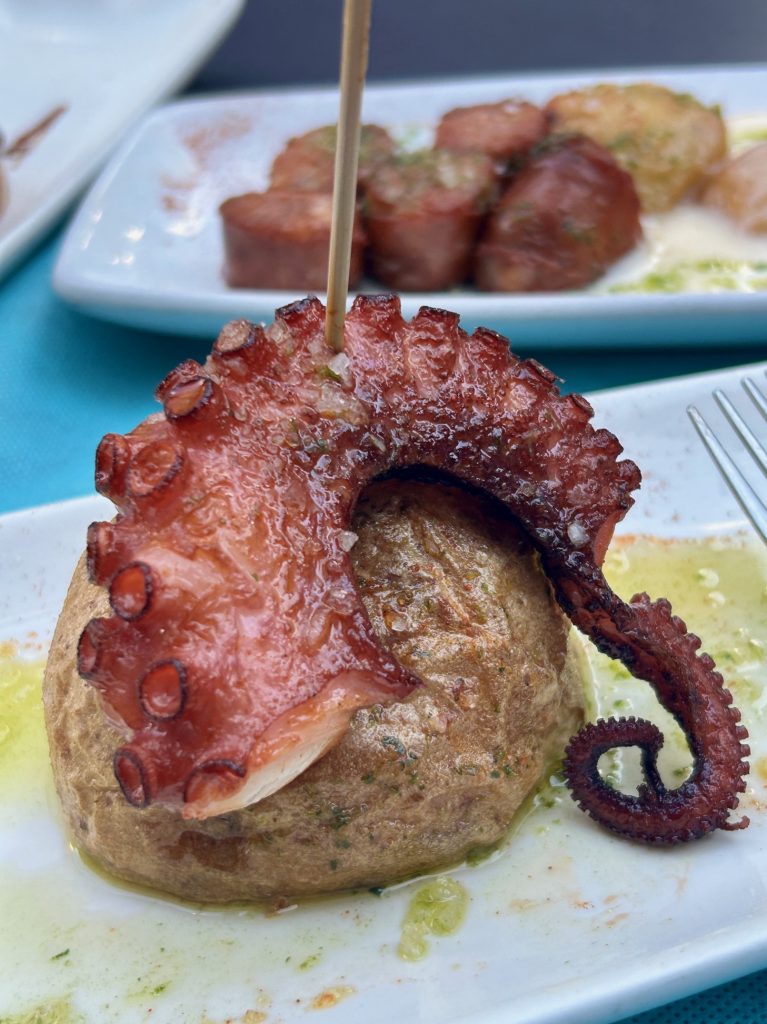
The first was an Iberian Sirloin Steak with baked apple, goat cheese, port wine and a strawberry sauce. The second is something Vanya ordered and thoroughly enjoyed, a Prawn and Squid Risotto. The third was my absolute favourite. All of the seafood was good but the Pulpo a Feira (octopus) was something else.

We had a wonderful time and we look forward to returning to Huesca City.

